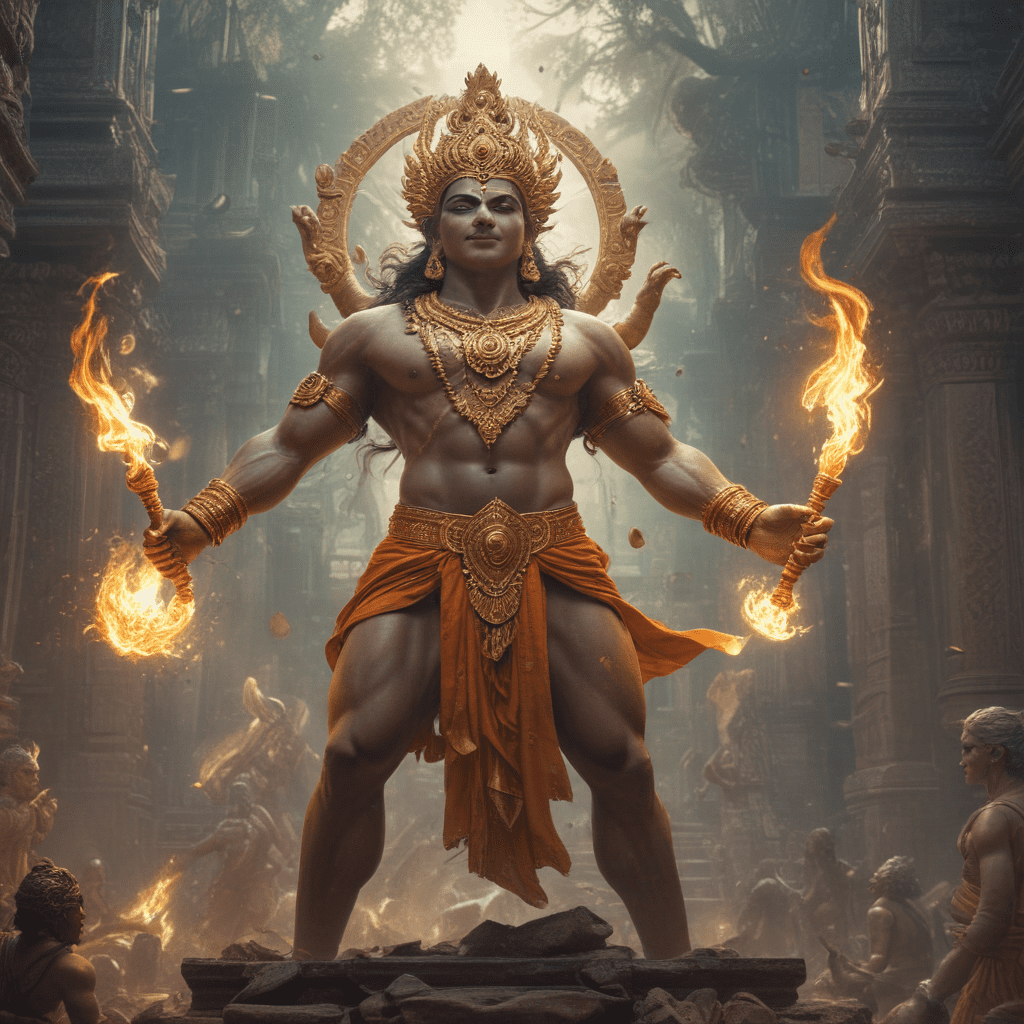Polynesian Mythology: Legends of Transformation
Polynesian mythology is rich in legends of transformation, reflecting the deep connection between nature, the divine, and the human experience in Polynesian culture. These stories encapsulate the beliefs and values of the Polynesian people, highlighting the fluidity and interconnectedness of all things.
I. Maui: The Trickster and Shape-Shifter
Maui is perhaps the most famous trickster figure in Polynesian mythology. As a demigod, he possessed the ability to transform himself into various animals, including a hawk, a dog, and a giant fish. Maui's shape-shifting allowed him to outwit his enemies, complete seemingly impossible tasks, and bring benefits to humankind. His most famous feat was fishing the North Island of New Zealand from the sea using his magical hook.
II. Hina: The Moon Goddess and Embodiment of Change
Hina is the goddess of the moon and is often associated with transformation. Her name means "to change" or "to become," and she is believed to control the tides, the waxing and waning of the moon, and the menstrual cycles of women. Hina's association with transformation symbolizes the cyclical nature of life and the constant renewal inherent in Polynesian cosmology.
III. The Creation of the Islands
Polynesian mythology tells of the creation of the islands by the gods. The god Tangaroa, who is often associated with the sea, fished up the islands from the depths of the ocean using a magical hook. The islands were then transformed into lush landscapes by the other gods, creating a habitable world for humans and other creatures.
IV. The Birth of Man from Clay
In many Polynesian legends, humans are said to have been created from clay by the creator god. This reflects the belief that all things, including humans, are connected to the earth and nature. The act of creation itself is seen as a transformation, as the inanimate clay is infused with life and form.
V. Demigods and Heroes with Animal Powers
Polynesian mythology is also replete with tales of demigods and heroes who possess animal powers. These figures often have the ability to transform into animals or take on their attributes, such as the strength of a lion or the wisdom of an owl. These transformations symbolize the close connection between humans and the animal world, and the importance of respecting and honoring all creatures.
VI. Shapeshifting to Escape Danger or Punishment
Shapeshifting was often used as a means to escape danger or punishment in Polynesian legends. For example, in the Hawaiian story of Kamapua'a, the pig-god escapes capture by transforming into a handsome man. Similarly, in the Samoan story of Sina and the Eel, Sina transforms herself into an eel to escape her cruel stepmother. These stories highlight the transformative power of cunning and resourcefulness.
VII. Rituals and Ceremonies Associated with Transformation
Various rituals and ceremonies in Polynesian cultures were associated with transformation. For instance, the Maori people of New Zealand performed a ritual called "tohi" to mark the transition of a child from childhood to adulthood. During this ritual, the child's hair was cut, symbolizing their transformation into a new stage of life.
VIII. Symbolism of Transformation in Polynesian Art
Polynesian art often features symbols and motifs that reflect the concept of transformation. Spiral designs, for example, represent the cyclical nature of life and death. Carvings and tattoos depicting animals and mythical creatures symbolize the interconnectedness of humans with the animal world.
IX. The Transformation of Land and Landscape
Polynesian mythology also tells of the transformation of land and landscape. In the Hawaiian legend of Pele, the goddess of fire, volcanic eruptions are seen as a transformative force that creates new land and reshapes the coastline. Similarly, the Maori people believe that the landscape itself is imbued with mana, a sacred power, and that human interactions with the land can influence its transformation.
X. Polynesian Legends of Transformation as a Reflection of Cultural Values
Polynesian legends of transformation reflect the core cultural values of the Polynesian people. They emphasize the importance of adaptability, resourcefulness, and respect for the natural world. These stories serve as a reminder that change is an inherent aspect of life and that embracing it with courage and resilience leads to personal and collective growth.
FAQs
- What is the significance of transformation in Polynesian mythology?
Transformation is a central concept in Polynesian mythology, representing the fluidity and interconnectedness of all things, from the natural world to the divine and human realms.
- How did Maui's shapeshifting abilities help him?
Maui's ability to transform into various animals allowed him to overcome challenges, outwit his enemies, and bring benefits to humankind.
- What is the symbolism of Hina as the goddess of the moon?
Hina's association with the moon symbolizes the cyclical nature of life and change, as well as the influence of celestial bodies on earthly events.
- How does the transformation of land relate to Polynesian cultural values?
The transformation of land in Polynesian legends reflects the belief that humans are connected to and have a responsibility to care for the natural world, and that changes in the landscape are both a reflection and a result of human actions.




